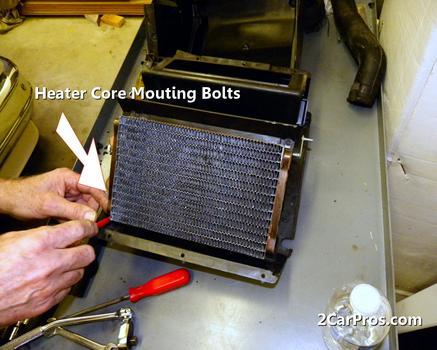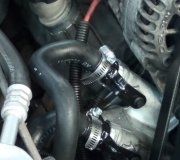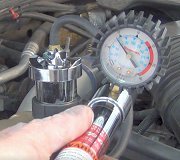I have never changed one in a Thunderbird, just a mustang - but it looks about the same.
The heater core is inside the evaporator housing behind the glovebox. As for how long it will take, that depends on how experienced you are. If this is the first time you have ever attempted to work on your car - find a friend that has done something similar, or take it to a shop because it is not easy.
If you do it yourself, expect it to take at least 3 hours. Personally I would give myself closer to 5 because nothing ever goes right for me. ;-)
As for price, the heater core itself will cost you about $50 you will have to recharge your A/C also, which will be around $100. If you take it to a shop they will probably charge close to $500 for parts labor and AC, I would give someone a call and verify - it may be cheaper than that.
As a temporary fix, I bypassed my heater core on the mustang by just hooking the two heater hoses together that go into the firewall. You can look at doing that if you don't want anti-freeze all over your floorboard.
If you are still interested in changing it yourself here are the steps according to my online manual. (Www. Eautorepair. Net by is excellent BTW.)
1. Disconnect negative battery cable.
2. Remove your instrument cluster from dash.
3. Discharge your AC and remove the lines at the accumulator drier, and drier.
4. Remove throttle cable bracket.
5. Disconnect heater hoses
6. Remove 3 bolts holding the evaporator housing from the firewall.
7. Back inside under the dash (I personally would remove the glove box, it only takes a second) then, "remove screw attaching evaporator assembly support bracket to the top of the cowl panel." There will also be a nut somewhere along the bottom holding it to the inside firewall.
8. Remove heater core access hatch from a/c evaporator housing.
9. Remove heater core and replace.
Just to let you know, there is usually a hard black plastic "glue" that these housings come sealed with from the factory. It would be good to scrape as much off of this is possible that will touch against the heater core, otherwise it will wear a hole in it.
Hope this helps, good luck!
Ryan
SPONSORED LINKS
Sunday, October 12th, 2008 AT 3:29 PM




